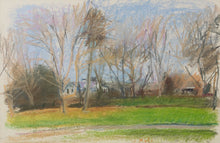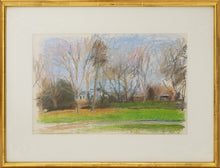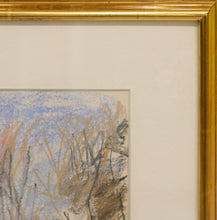Manolis Place on Halsey Neck Road, 1989
Pastel on Paper
12 x 18 inches
Framed Dimensions: 19.25h x 25.25w x 1.50d inches
Wolf Kahn was a frequent weekend guest of his friend and student J. Steven Manolis. They would spend time together painting barns in The Hamptons, about 40 times over a 20 year period. On one such visit, Wolf painted this work. This home is called Beechside and is located in Southhampton, NY.
Wolf Kahn is known for his fusion of color, spontaneity and loose brush strokes, which create the luminous and vibrant atmospheric landscapes and color fields. Kahn’s unique blend of American Realism and the formal discipline of Color Field painting sets his work apart from his contemporaries.
According to his painting student J. Steven Manolis, when Kahn traveled, he always painted with pastels because they were easy to transport. He also started his painting day with a 2-3 hour session of pastels. Kahn would say, "Pastels are my calisthenics before painting with oils on canvas." He would joke, "I breathe, I pastel." He considered pastel to be the "equivalent of dust from butterflies wings." His pastel technique would include placing the pastel on paper and then rubbing and smearing the pastel on the paper with his fingertips.
Almost all Wolf Kahn oil paintings were scaled up versions of an earlier pastel. Most art historians and art critics consider Wolf Kahn to be one of the most significant pastel artists ever, and certainly since Degas.






